Occupational Safety Training for Plastics Molding Manufacturing
99,000 ₫
Note: The above price is calculated for one person, and the price may fluctuate depending on the number of trainees participating in the course and market movements. For more accurate pricing support, please refer to the pricing table or contact our consulting staff directly.
The Plastics Molding Safety Training course is a course that provides Group 3 occupational safety knowledge. The course will raise awareness on how to prevent workplace accidents during the operation of plastics molding manufacturing for trainees. Accordingly, the occupational safety training content is closely based on Article 18 Decree 44/2016/ND-CP.
Table of Contents
Toggle1. Overview of the Plastics Molding Industry
a. What is the plastics industry?
- Plastics are extremely flexible materials and ideal for a wide range of applications in daily life and industry.
- Plastic, also known as polymer, is used as a material for manufacturing many types of products. It plays an important role in serving human life as well as supporting the development of many economic sectors such as electricity, electronics, telecommunications, transportation, aquaculture, agriculture, etc.
- With the development of science and technology, plastics have also been applied as a substitute for traditional materials that seemed irreplaceable, such as wood, metal, silicate, etc. Therefore, the plastics industry increasingly plays an important role in life and manufacturing of countries.

b. Types of machinery in the Plastics Molding industry
Plastics Molding manufacturing goes through many complex processes. Accordingly, there are various types of machines serving the plastics molding manufacturing process. Below are the basic machines used in the Plastics Molding industry:
- Plastic Shredder
- The plastic shredder is one of the most important machines for factories in the plastics industry. It is commonly used to grind raw materials such as PVC, PE, LDPE, LLDPE, HDPE, PP, ABS, PS, PA, PC and to recycle plastics into granules.
- With many advantages such as advanced design, reasonable structure, low energy consumption, high output, stable operation, and ease of installation and maintenance, the plastic shredder is a product chosen by many factories.

- Material Loader
- The material loader is used in most industrial sectors, especially in plastics manufacturing, for materials such as plastic granules, mixed powders, PP, PS, PE, PET, EVA, TiO2, soft pellets, CaCO3, etc.
- With outstanding features in design and functionality, the material loader helps improve productivity and product quality.
- It also reduces waste and product contamination. The machine has a small movement range, making efficient use of space.
- The machine has a closed working system, creating a dust-free environment, avoiding hazards to workers from inhalation.

- Plastic Drying Hopper
- The drying hopper dries raw materials before feeding them into production and transfers materials to the hopper or from the hopper to the production machine.
- This machine heats the material to ensure the plastic is not moist, does not have surface voids, or air bubbles.

- Plastic Injection Machine
- The plastic injection machine, also known as a forming machine, injection molding machine, or glue injection machine, is commonly used in injection molding production lines. It holds the mold fixed while molten plastic is injected into the mold cavity under pressure to fill it, then opens the mold after the product has cooled. The product is then ejected through the machine’s core system.
- The plastic injection machine consists of two main components: the mold clamping unit and the injection unit.
- In addition to these two main components, the machine also includes cooling systems, robots, or other support systems.
- After the mold cavity is filled with plastic, the cooling system converts the plastic from liquid to solid to form the product. Then, the movable mold clamping unit opens the mold a predetermined distance, ejecting the product through the machine’s ejector rod, applying force on the mold’s pin system.

- Lathe and Milling Machines for Mold Making
- Some Plastics Molding factories also carry out mold manufacturing to support injection machines.
- Mold production requires two types of machines: lathe and milling machines.
- Lathe processing is a metal cutting process where the main movement is the rotation of the workpiece.
- The cutting tool moves linearly, cutting the mold workpiece symmetrically along the rotation axis.
- The milling machine has a rotating spindle driven by an electric or pneumatic motor. The spindle holds a cutting tool that machines a hard material, such as a metal mold workpiece.

- Overhead Crane
- The overhead crane is equipment used to lift, lower, and move molds in the factory.
- It is very convenient and efficient for mold handling, with lifting capacities from 1 to 500 tons, mostly operated by electric motors.
- These cranes are widely used in injection molding factories and are essential for installing molds into injection machines.
c. Prominent companies in the Plastics Molding industry
Prominent companies in Plastics Molding include:
- Binh Minh Plastics Group (BMP): One of the leading factories in Vietnam in manufacturing Plastics Molding products, specializing in industrial plastic products such as water pipes.
- Rang Dong Group: Established in 1960, Rang Dong has become a top plastics manufacturing factory in Vietnam producing plastic bottles, pipes, sheets, etc.
- BKP Company Limited: A leading Vietnamese factory specializing in high-quality Plastics Molding products for various industries, producing sheets, pipes, and electronic accessories.
- Dong A Plastics Company Limited (DAP): One of Vietnam’s top Plastics Molding factories, producing sheets, pipes, and plastic pipelines, known for high quality and competitive pricing.

d. Specific jobs in the Plastics Molding industry
Plastics Molding is a specialized manufacturing field with many applications. Specific jobs include:
- Design engineers: Create technical drawings, ensure product feasibility, and optimize manufacturing processes.
- Processing technicians: Manufacture plastic products according to customer requirements and ensure quality.
- Technical operators: Operate machines and equipment for Plastics Molding, control manufacturing processes, and monitor product quality.
- Maintenance technicians: Repair, maintain, and supervise the operation of manufacturing equipment.
- Quality control technicians: Inspect and evaluate products to meet quality standards and customer requirements.
- Environmental technicians: Ensure compliance with environmental regulations in manufacturing and waste management.
- Sales staff: Manage and develop customer networks, find and maintain clients.
- Production managers: Manage manufacturing operations, ensure progress, quality, and efficiency.
- Quality managers: Ensure products meet quality standards and customer requirements.
- R&D staff: Develop new technologies and products to improve and enhance product quality.

e. Products in the Plastics Molding industry
Plastics Molding products are diverse and include:
- Plastic packaging: Widely used in packaging and transportation, such as plastic bags.
- Automotive parts: Plastics Molding parts such as wheel covers, fenders, and decorative components.
- Household items: Plastic molded products used in water bottles, refrigerators, water purifiers, etc.
- Medical products: Plastics Molding is used to manufacture medical devices such as implants, health, and personal care products.
- Electronics: Plastics Molding used to produce electronic items such as control panels, computer cases, phone cases, etc.
- Other industrial products: Plastics Molding products are used in industries such as toys, furniture, hygiene products, etc.
2. Overview of occupational safety training in the Plastics Molding industry
a. What is occupational safety training in Plastics Molding?
- Occupational safety training in Plastics Molding consists of sessions providing workers awareness on preventing workplace accidents. Workers in Plastics Molding belong to Group 3.
- The training helps workers recognize and avoid hazards, reducing the risk of accidents during work.
REGISTER FOR OCCUPATIONAL SAFETY TRAINING SERVICE
b. Training duration
- Initial occupational safety training
- Total training time must be at least 24 hours, including examination time.
- 8 hours theory on policies and labor safety laws
- 8 hours theory on basic occupational safety knowledge
- 4 hours theory on specialized training content
- 2 hours practical exercises on specialized content
- 2 hours theoretical examination at the end of the course
The safety training center divides time into sessions based on workers’ schedules. Typically, 6 sessions over 3 days are conducted if the factory arranges continuous learning time.
- Periodic occupational safety training
- Before the occupational safety card expires, workers who want renewal must undergo periodic occupational safety training, with total duration at least 50% of the initial training duration.
Total periodic training must be at least 12 hours, including examination. After completion and passing the test, workers will receive a renewed occupational safety card.

c. Training content
| No. | TRAINING CONTENT | TRAINING DURATION (HOURS) | |||
| Total | Including | ||||
| Theory | Practice | Examination | |||
| I | Occupational safety policies and laws | 8 | 8 | 0 | 0 |
| 1 | Overview of regulations on occupational safety and hygiene. | 6 | 6 | ||
| 2 | Standards and technical regulations for occupational safety and hygiene. | 1 | 1 | ||
| 3 | Specific regulations by state management agencies on occupational safety when constructing, expanding, or renovating facilities, machinery, equipment, and materials requiring strict safety and hygiene. | 1 | 1 | ||
| II | Basic occupational safety knowledge | 8 | 8 | 0 | 0 |
| 1 | Basic knowledge of hazards in the workplace. | 4 | 4 | ||
| 2 | Methods to improve working conditions. | 1 | 1 | ||
| 3 | Safety culture in production and business. | 1 | 1 | ||
| 4 | Rights and duties of employers and employees; occupational safety policies; role of safety staff. | 1 | 1 | ||
| 5 | Safety rules, signs, and use of protective equipment; first aid and occupational disease prevention. | 1 | 1 | ||
| III | Specialized training content | 6 | 4 | 2 | 0 |
| Knowledge about machines, equipment, hazardous substances; risk assessment and management; safe work procedures with machinery and hazardous substances. | 6 | 4 | 2 | ||
| IV | End-of-course occupational safety examination | 2 | 2 | 0 | 0 |
| Total | 24 | 22 | 2 | ||
See more training content of 6 groups
d. Occupational safety training certificate
After completing the occupational safety training and passing the exam, workers will be issued a Group 3 occupational safety certificate.
The safety card shows the worker’s name, date of birth, job, and specific working environment, along with training duration, red stamp, and signature confirming completion.
According to Clause 2 of Article 24, Decree 44/2016/ND-CP, there are two cases:
- If the employer and employee have a labor contract, the employer must sign, stamp, and validate the safety card for Group 3 workers after training and passing the test.
- If the worker is freelance or seasonal without a labor contract, the training unit must sign, stamp, and validate the safety card after training and passing the test.

3. Recognizing hazards in the Plastics Molding industry
- Moving parts in plastic shredding machines can catch sleeves or workers’ hands.
- Heat sources from plastic drying machines or plastic injection machines can cause burns if touched.
- Plastic fumes emitted from drying machines and injection machines can cause nasal allergies, poisoning, and long-term lung damage.
- Moving parts with cutting blades, used for metal trimming, can cause hand cuts if contacted.
- Flying metal debris into the eyes from turning or milling processes.
- Falling molds, cable breakage, or collisions when moving molds with overhead cranes.
- Exposed electrical wires can cause electric shocks.
4. Safety Measures for the Plastics Molding Industry
- Establish operational procedures and regulations for machinery that are suitable and safe.
- Machine operators must have professional knowledge and expertise.
- Occupational safety training for workers in the plastics molding factory
- Equip workers with all necessary personal protective equipment before working
- Arrange machinery and materials neatly and scientifically
- Workers must always maintain high awareness during the work process.
- Periodically conduct occupational environment monitoring in the factory, collect and analyze harmful factors affecting workers, and adjust to reduce hazards to prevent occupational diseases.

5. Benefits of the Occupational Safety Card in the Plastics Molding Industry
An Toan Nam Viet provides your business with the following benefits upon completing occupational safety training courses in accordance with Decree 44/2016/ND – CP regarding occupational safety and hygiene for companies, factories, and enterprises.
- Workers can recognize potential occupational hazards and take preventive measures to avoid accidents.
- Your business can establish risk prevention measures in production, operation, and maintenance processes.
- Reduce costs associated with workplace safety incidents.
- Uninterrupted manufacturing processes will help increase labor productivity and product quality.
- Comply with occupational safety laws, avoiding legal risks.
- Create credibility and professionalism in all aspects, thereby enhancing your company’s brand.
Nam Viet’s training courses are the solution to prevent external hazards from affecting individuals, helping them avoid dangers that could lead to injury or even death.
REGISTER FOR OCCUPATIONAL SAFETY TRAINING SERVICE
6. Customer Feedback After Completing Training Courses
An Toan Nam Viet has many years of experience accompanying businesses in Vietnam in general and in the southern provinces in particular. This responsibility is extremely valuable to Nam Viet, which is why our Occupational Safety Training is increasingly professional. The motivation for An Toan Nam Viet’s growth comes from positive feedback and suggestions from businesses. Below are the feedback from our partners.
Bac Nam E&C Construction Investment Joint Stock Company
“The first time I used An Toan Nam Viet’s service, I was very surprised by the enthusiastic 24/7 support from the consulting team. The class organization was very quick and convenient for our company, thank you very much for Nam Viet’s service!”
Hoa Dat Construction and Trading Joint Stock Company
“Nam Viet’s service has helped us greatly in simplifying occupational safety and completing safety records for work processes. The consulting team responded promptly and enthusiastically to our questions. Five stars for Nam Viet.”
See more customer interviews after using the service from An Toan Nam Viet
7. Occupational Safety Training Capabilities of An Toan Nam Viet
An Toan Nam Viet is a reputable and high-quality occupational safety training center in Vietnam. Training sessions are continuously conducted at manufacturing workshops, factories, or construction sites nationwide (63 provinces in Vietnam).
REGISTER FOR OCCUPATIONAL SAFETY TRAINING SERVICE
Occupational Safety Training License
- An Toan Nam Viet has been inspected and certified by the Department of Labor Safety under the Ministry of Labor – Invalids and Social Affairs, which strengthens our capability in occupational safety training.

Training Materials and Lectures
- Before being used in Occupational Safety Training Courses, all training materials are reviewed to ensure knowledge accuracy and effectiveness.
- Teaching methods of instructors are standardized according to An Toan Nam Viet’s guidelines, developed by occupational safety experts to maximize knowledge retention for learners.
Facilities
- Controlling classroom conditions that affect training increases teaching efficiency and learning outcomes.
- Our training facilities provide spacious classrooms that meet standards for area, lighting, and training equipment.
8. Nationwide Reputable Occupational Safety Training Center
At An Toan Nam Viet, we prioritize occupational safety training. For us, imparting self-protection knowledge to workers to ensure their safety while working contributes to nation-building.
To ensure effective training, we meticulously prepare every detail, from tools, teaching equipment to curriculum, materials, sound, and lighting.
Our instructors are experts with many years of experience, including research on identifying hazards across industries and how to prevent them.
Lectures are practical, engaging, and easy for workers to understand, helping learners feel comfortable and absorb knowledge effectively, always aligned with Decree 44/2016/ND-CP.
Learners will gain knowledge of hazard prevention and self-protection measures, applying them appropriately in real work situations.
Our training center proudly provides professional, reputable occupational safety training with advantages including:
- Competitive training costs without compromising quality.
- Flexible training schedules according to company manufacturing requirements.
- Fast certification procedures compliant with legal regulations.
- Experienced instructors with many years in the field.
- Controlled classroom conditions that enhance teaching efficiency and learning outcomes.
- Lectures tailored to occupational safety requirements in enterprises.
- An Toan Nam Viet works dedicatedly and professionally to support clients accurately and promptly.

9. Additional Occupational Safety Training Materials
- Occupational safety materials for the Plastics Molding industry
- Mechanical safety training materials
- Group 3 occupational safety test papers
- Plastics Molding occupational safety multiple-choice tests
- Plastics Molding occupational safety training slides
10 reviews for Occupational Safety Training for Plastics Molding Manufacturing
No comments yet

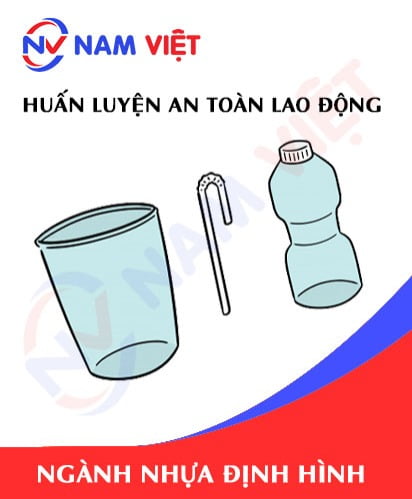
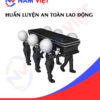






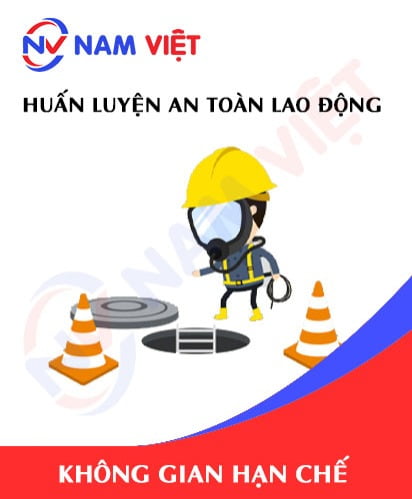
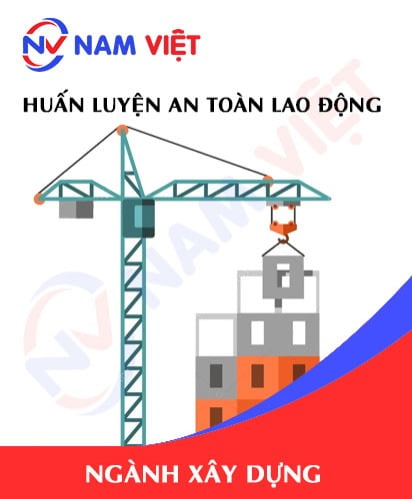
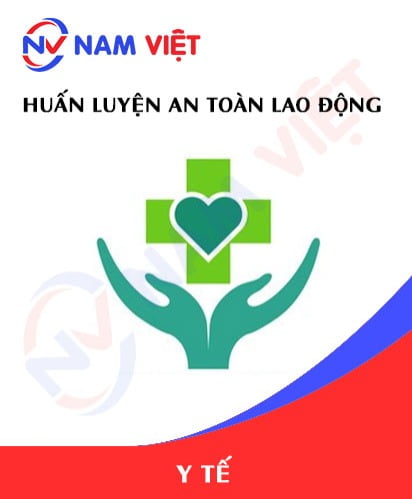
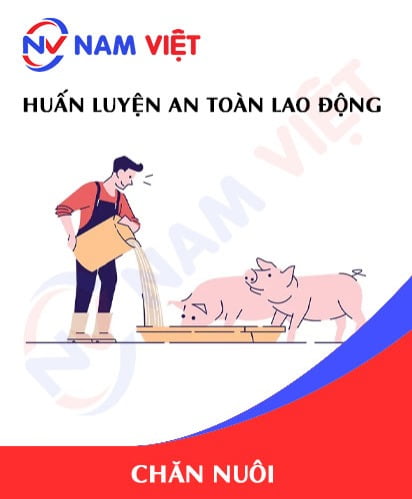
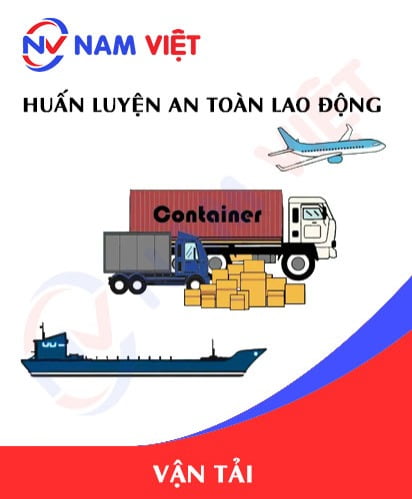

huynhtran_dathien22
Sự đóng góp tích cự của Nam Việt cho an toàn lao động tại Việt Nam là không thể chối cãi. An Toàn Nam Việt đã trao món quà về sức khỏe lao động cho công nhân của chúng tôi, để họ có thể bảo vệ bản thân mình. Thay mặt Anh/Chị/Em công nhân, tôi gửi lời cảm ơn đến công ty Nam Việt rất nhiều.
hoangxuanloc_kentai
tổ chức rất nhanh và đúng giờ, thầy dạy an toàn rất có tâm
kendy_trannguyen_land
Dịch vụ An Toàn Nam Việt rất tuyệt vời!. Các bạn đã hỗ trợ công ty của chúng tôi rất tận tình và chu đáo
tinaxuanquynh_saigon
Tư vấn rất sâu sắc, giúp tôi giải quyết những khó khăn về chuyên môn trong lĩnh vực huấn luyện an toàn.
huynhdanhstanley241
Giảng viên giảng rất hay, có lẽ thầy cũng lớn tuổi rồi nên nhiều kinh nghiệm.
quythu_duanuong
Khóa huấn luyện ok lắm!
xingfutan7_dongnai
trung tâm huấn luyện an toàn rất uy tín, tận tâm tư vấn.
vanhieutran2306
Bài giảng của thầy rất tuyệt vời, ngồi nghe mà lôi cuốn lắm nha. Công tác tổ chức lớp học cũng chu đáo nữa, nếu lần sau mà tôi có nhu cầu huấn luyện an toàn chắc chắn tôi sẽ tìm đến Nam Việt.
hoamaicontrusterdn
Nam Việt tư vấn cho tôi rất nhiệt tình, giải đáp thắc mắc của tôi một cách chu đáo. Về điều này thôi là đã muốn sử dụng dịch vụ của trung tâm huấn luyện rồi.
kytucxathienhuong
Nhanh chóng và rất chu đáo, bên Nam Việt tổ chức khóa huấn luyện khiến tôi rất hài lòng, cho 5 sao luôn!